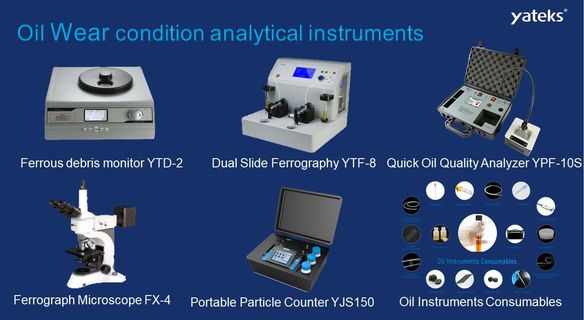The main benefits of on-site oil analysis are reduced maintenance costs and increased productivity through increased equipment uptime. Proper use of oil and keeping it dry and clean can prolong equipment uptime.
Oil mixing is one of the most common problems that lead to equipment failure. The selection of suitable lubricating oil is the most basic task for a machine, and suitable lubricating oil can improve the reliability of mechanical operation. Checking the viscosity, brand and grade of incoming oil and contamination from foreign fluids can help reduce the chance of oil mixing and keep equipment running efficiently.
In order to keep the oil dry, clean and free from contamination, the sealing and filtration system must be working properly and checked regularly. Dirt from sand and oil can cause abrasive wear. Moisture in oil can cause corrosion. Fuel or antifreeze in the engine oil can change the oil viscosity and cause adhesive wear. So it is necessary to keep the lubricating oil clean and dry.
In order to ensure the normal operation of the oil, the state of the oil must be monitored regularly to ensure that its performance is within the specified range. A comprehensive oil analysis program should simultaneously monitor equipment wear status, oil contamination and aging status. Key parameters are measured regularly and trends are closely monitored. If one or more parameters exceed alarm limits or trend rate changes are detected, maintenance engineers need to be notified to resolve the underlying problem.
A good oil analysis program can avoid production downtime due to equipment failure, thereby reducing repair costs and production losses. In power plants or paper mills, cost reductions are primarily achieved through reduced downtime and maintenance costs. Mines with hundreds of freight trucks cut costs primarily by eliminating potential engine failures. For municipal fleets, the major cost savings are through oil analysis to reduce material, labor and extend drain intervals.
On-site or inspection? This is a problem
Awareness of oil analysis among reliability professionals has grown over the years. A large number of oil analysis cases are published every year to demonstrate how oil analysis and lubricant management can improve equipment reliability and reduce costs. Some well-established companies or organizations have integrated oil analysis into their predictive maintenance and process control.
It is common practice to send oil analysis to an oil testing laboratory. Laboratories around the world analyze hundreds of millions of oil samples each year. Submittal oil analysis involves collecting an oil sample from the equipment and transporting it to a laboratory. Laboratory technicians first conduct oil analysis tests as required by the equipment type, then review the data and make recommendations in the final test report. Then the report is fed back to the submitting user, and the submitting user will perform maintenance based on these suggestions if necessary.


